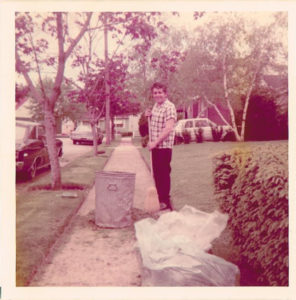Happy Whitsuntide. Easter is past, Ascension Day, too, and now it is Pentecost: Holy Spirit descended upon earth. It is the day when the apostles gathered in Jerusalem and spoke to the people and everyone, it is said, understood them, no matter whether they were Jew or Greek or Roman: there was, that day, no barrier of language. A day of clarity. Like no day before and no day since, and if the world has shown us anything in recent days, it is that we are as far from understanding each other as we’ve ever been.
They say that in France on Pentecost it is traditional to hear trumpets playing during Mass, the trumpet music symbolizing wind, breath, Holy Spirit manifested. But each Pentecost, my thoughts return to a simpler place with the very first Pentecost I spent at Chosen Land, the Sabbathday Lake Shaker Community in Maine, in 1996. It’s a story I tell you each year, but it’s a story I love, and just like my father told stories over and over again, usually as if it was the first time he had ever told you, I’ll tell you this one again, too, because this is what we do: We tell the stories again and again, to keep them alive, always on the breath, exhaled into the world. Exhalation, inspiration.
And so I was there for that Shaker Sunday Meeting, and Seth was there, and all the Shakers I had just met were there, too (and it was a larger Community then), the men on one side of the 1794 Meetinghouse, the women on the other. Father Bob Limpert, an Episcopal minister from New York, was there, too, and still to this day occasionally I’ll hear from Father Bob. And the Shakers that Pentecost in 1996 let Father Bob give a more formal sermon to all who were gathered: all the Shakers, and all the people “from the world,” as the Shakers say, who were there that Sunday, too. It was a very windy day. Father Bob was inspired that blustery day to talk about the relationships between words like gust and ghost and it was Pentecost, of course, the day the Church celebrates the coming of the Holy Spirit… which, when I was a kid, was better known as the Holy Ghost. And here was this day of gusting wind ushering in holy ghosts of all kinds in this old building full of history: gust to ghost to spirit. And spirit brings us to inspiration.
And this always reminds me of one of my favorite professors from college, Myriam Swennen Ruthenberg, who also remains in touch with me to this day, and who, in an Italian Literature class, perhaps over Dante or Bocaccio or Giuseppe di Lampedusa, spoke one day of the connexions between words, too. Her words that day were the Italian versions of respiration and inspiration and their common Latin root: spirare, breath. We breathe in and out in the act of respiration, but we also breathe in and out inspiration: we are inspired by what we take in, and what we exude or breathe out hopefully inspires others.
If you’ll follow along on my winding trail, these things all connect: the gust and ghost of Father Bob, the breathing in and out of Professoressa Ruthenberg. All are not so much of the earth as they are of the air and so they lack heaviness and instead are light and ethereal. Inspiration comes to us sometimes as fleeting as breath, a ghost seen just briefly from the corner of the eye.
gust–> ghost–> spirit–> breath–> respiration–> inspiration
Pentecost never meant much to me but it did after that Pentecost Sunday at Chosen Land in 1996. I think of it now as a day of exquisite connexions. (And yes, the X is purposeful, for that, to me, seems more closely related to the idea of connecting ideas––like a mathematical expression of language.)
Image: Illustration of a weathervane from Die Gartenlaube (The Gazebo), a hugely popular weekly illustrated magazine published in Germany in the 19th century by bookseller Ernst Keil. [Public domain] via Wikimedia Commons. An angel blowing a trumpet as weathervane activated by wind? I think it’s the perfect illustration for today’s Book of Days chapter.



